June 11, 2025 | 00:08 GMT +7
June 11, 2025 | 00:08 GMT +7
Hotline: 0913.378.918
June 11, 2025 | 00:08 GMT +7
Hotline: 0913.378.918
In the highlands of Bac Ha (Nam Mon commune, Lao Cai province), along winding paths like brushstrokes through the mountains, the Co De Chai Agricultural Cooperative is bringing rare medicinal plants back to life. Under the shelter of the forest canopy, restoration takes root where wild trees and healing herbs breathe and grow together amid mist and the nurturing embrace of Mother Earth.
There is quiet warmth as we arrived, greeted with a cup of steaming tea steeped from genuine ginseng leaves in a space softly veiled in fog. The tea’s subtle bitterness and delicate aroma linger in the soul. Pouring the tea is Mrs. Vu Thi Van Phuong. Her voice is gentle, her smile is serene. She once stood at death’s door with both liver and thyroid cancer, but now she walks again among the trees, rebuilding a "forest of medicine" and giving thanks to the very plants that saved her.
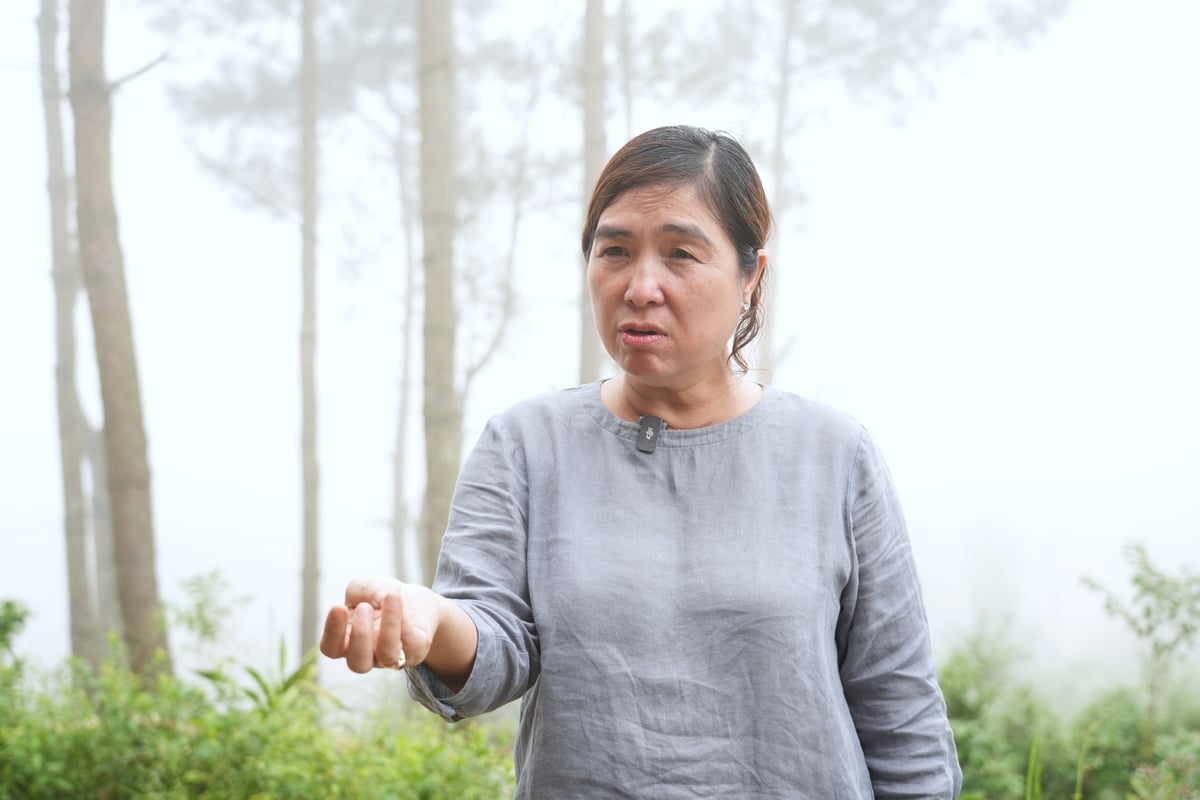
Mrs. Vu Thi Van Phuong spoke about the plants that saved her life.
Her journey began with a life-altering crisis. In 2008, while working as a teacher, she was diagnosed with liver cancer. Radiation therapy failed. The doctors gave up. Her family, heartbroken, quietly prepared for her final days. But in a decision that seemed fragile yet resolute, her husband gently brought her back to her birthplace, Yen Bai province. No promises were made, and merely go home.
But, her decision turned to be the light at the end of the tunnel. Through word of mouth, she was introduced to a traditional healer. There were no prescriptions, no labeled medicine, just handfuls of leaves, roots, and simple instructions passed down through generations. Miraculously, her health began to improve. Gradually, she crossed the threshold from the edge of death to a new chapter of life - devoted to gratitude.
"If nature and medicinal plants saved my life, gave me a second chance, then I must spend the rest of my days honoring Vietnamese healing herbs." It was a vow, a calling that would guide her future path in conserving and developing traditional medicine.
She left the school and set off across the Northwest mountains, seeking out native herbs that had been overseen. She learned how to harvest leaves, dry roots, and process them using age-old methods. Knowledge once on the verge of being lost was gathered again, through memory and deep gratitude. She established VietRAP Investment and Trading JSC as a way to safeguard a precious heritage buried in fading documents and forests being threatened by encroachment.
Her arrival in Bac Ha (Lao Cai) was also a matter of fate. It became the place where she would begin to sow and protect the seeds of rare medicinal plants, giving them - and herself - a new life.
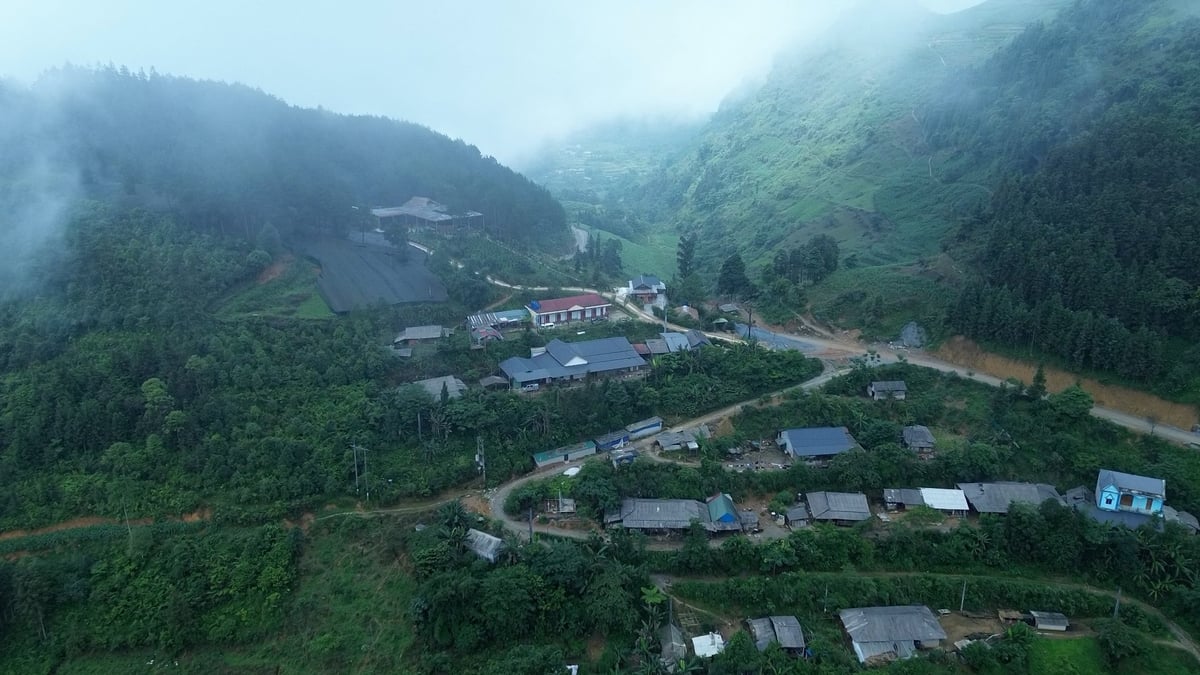
The rolling clouds, majestic mountains, lush green forests with the intoxicating scent of the highlands, she chose this land as her sanctuary.
If Mrs. Phuong was the one who lit the first flame on the journey to rediscover and cultivate medicinal plants, Mr. Dang Quang Trung is the keeper of that flame, who shaped that vision into reality amid the misty mountains of Bac Ha. He can be called "the pathfinder" - quiet yet steadfast, a wanderer carrying a dream of growing healing herbs in the wilderness.
Before falling in love with the forest, Mr. Trung worked for a state-owned agricultural processing corporation. Trained as a Mathematical Informatics engineer, he was familiar with the winding, rugged mountain roads of northern Vietnam. On weekends, he became an unofficial driver for Mrs. Phuong, taking her to herbal-growing regions. Little by little, the affection for medicinal plants seeped into him.
In early 2015, during a trip with Mrs. Phuong to Bac Ha, he stood in the stillness of the ancient forest and watched the radiant faces of the local people, dressed in colorful traditional clothing, carrying seedlings of medicinal plants in bamboo baskets, following her into the hills. In that moment, a deep yearning welled up within him - a desire to contribute, to be part of this work, to stay and walk alongside these people, helping to deepen the green of medicinal plants on this remote, mountainous frontier.
That quiet calling began to permeate his every breath, urging him toward a new beginning - a life simpler, yet more fulfilling.
It took him only a week to wrap up his job, and with his family’s full support, he resigned. He traveled to Bac Ha and bought a small plot of land, about 200 square meters, at the foot of Ngai Xo Mountain, where the most valuable asset was an abandoned buffalo shed.
From that shed, he created a makeshift home. Each morning, he climbed mountain slopes and hillsides, measuring temperature, elevation, and checking soil quality. He wandered through villages, seeking out elderly H’Mong and Dao residents, asking about places where notoginseng (tam thất) used to grow, where ginseng once sprouted, or where the rare Paris polyphylla (thất diệp nhất chi hoa) had been found. He carefully mapped and documented every detail.

Mr. Dang Quang Trung, Director of Co De Chai Cooperative.
In the first season, he planted test crops, waited for the first sprouts, and meticulously recorded the soil’s changes. A few curious locals stopped by. Some chuckled, others shook their heads and walked away. He didn’t explain. “Let the plants speak,” he thought.
The plants did speak. Young ginseng leaves unfurled under early summer sun, notoginseng sprouted slowly yet firmly - just like the man who nurtured them. Even Paris polyphylla appeared precious, rare, and difficult to grow. The villagers began to take notice. They came to help, exchanging seedlings for gardening. From hired hands, they became partners. From outsiders, they became family.
And that is how the Co De Chai Agricultural Cooperative was born.
Trust and hope were ignited, sweat was shed, and challenges came and went. But, nature occasionally shows its anger. In 2019, a hailstorm struck in less than an hour, devastating a hectare of notoginseng and obliterating about 450,000 young plants. Trung stood in the wreckage with his team, speechless amidst fallen land and broken plants that yesterday had shown such promise. He watched the young H’Mong assistant tremble, whispered: “It’s all ruined …”
Trung did not curse fate, yet quietly bent down and rolled up his sleeves. But hardship did not stop there. In 2020 - 2021, COVID-19 hit just when the medicinal beds needed meticulous care, they could not be abandoned or neglected.
Not long after the pandemic subsided, Storm Yagi hit last year, once again testing the resilience of Co De Chai Cooperative. But, nobody left. Everyone stayed firm, united, determined to protect the forest by living with it.
After nearly a decade, the cooperative has flourished like the plants grow. From 1 ha to 10 ha, then 22 ha, now 45 ha - capable of fulfilling large orders. From 5 households to 50, now connecting more than 1,200 households with over 2,400 members. Behind each number is a story of people who chose to stay in the forest, live among the trees. The forest gives more than medicine as it provides livelihoods, and a clean, green future nurtured by hands that love the land and hearts still scented with mountain air.
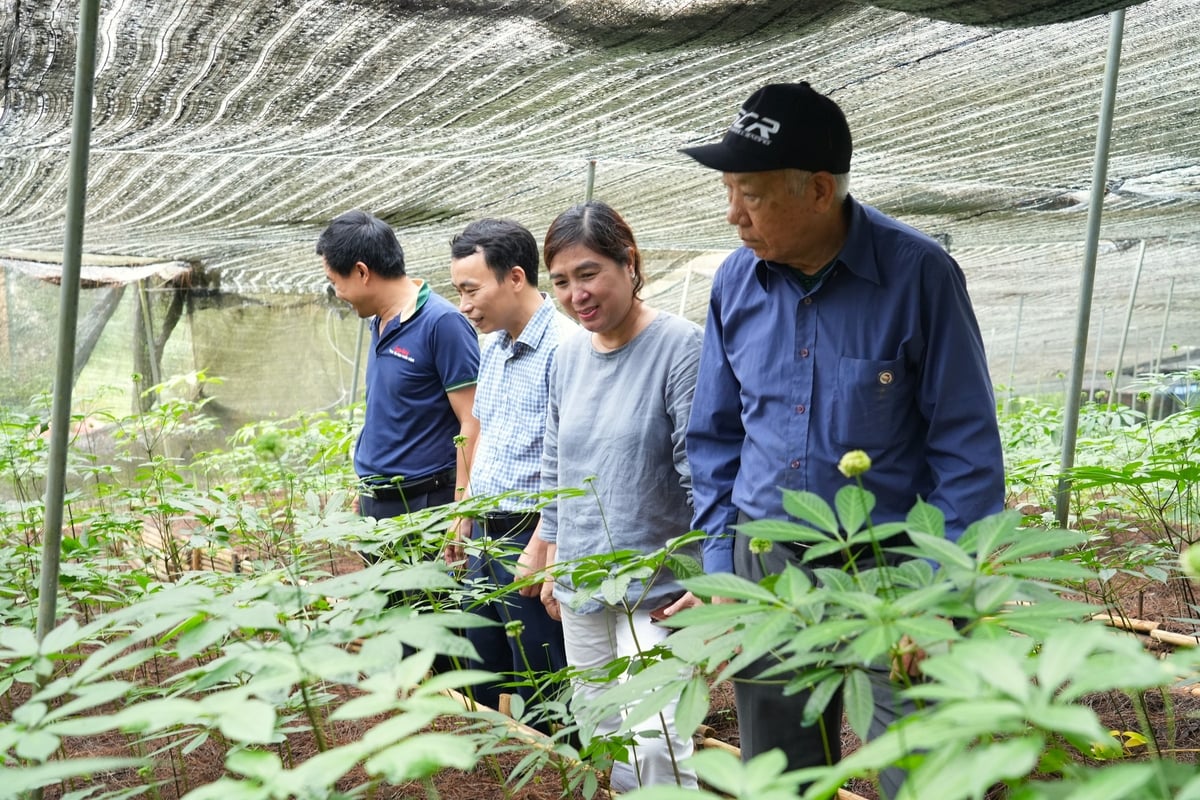
People here do farming to preserve land, to protect forests, to realize that survival comes not only from corn and rice, but from ancestral indigenous knowledge.
Mr. Dang Quang Trung, director of Co De Chai Agricultural Cooperative, shared:
“We founded the cooperative with a single mindset, to unite members in protecting the forest by living with it. Specifically, the cooperative conserves and cultivates rare medicinal plants typical of the Northwest, like Panax notoginseng (tam thất bắc, tam thất nam), Vietnamese ginseng (hà thủ ô), Lai Chau ginseng, purple cardamom (tiêu tím), ấu tẩu, and Paris polyphylla (thất diệp nhất chi hoa). Even Ngoc Linh ginseng from Quang Nam-Kon Tum has thrived in the fertile land of Bac Ha for nine years now. We focus on root plants because they demand long-term commitment, deep knowledge, and patience.
The cooperative is not just a producer, but it’s a hub for transferring skills. From selecting seedlings, planting, caring, to preservation: “We want every household to become a ‘guardian of the plant’, each herbal garden a part of a sustainable ecosystem.”
They supply raw materials to traditional medicine and oriental pharmaceutical factories, and process products, including herbal sweets, rubs, essential oils, tea bags, and more recently cosmetics and functional foods. All are under strict chain-of-custody from field to consumer. Quality and origin matters more than quantity.
Co De Chai also links its value chain with VietRAP Investment & Trading JSC to enhance scientific research and develop high-value products for public health. They continuously improve customer care and deliver clean, beneficial products.
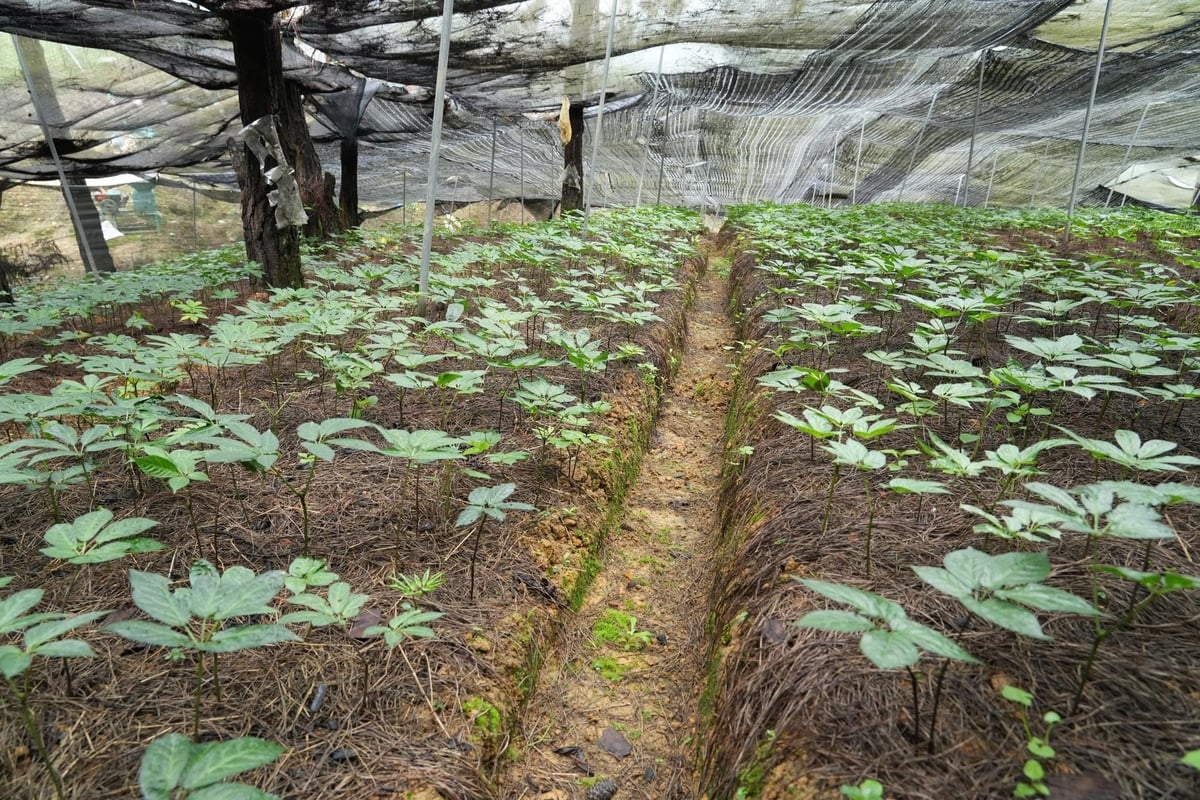
To thrive and produce high-quality compounds, the plants needs matching the species to its growing environment: climate, elevation, soil, humidity, light, forest cover.
Mrs. Vu Thi Van Phuong, director of VietRAP and co‑founder of the cooperative, emphasized:
“For medicinal plants to thrive and produce high-quality compounds, the core is to match the species to its growing environment: climate, elevation, soil, humidity, light, forest cover. Not just theory, each growing region must be surveyed in detail: meteorology, soil layers, water flow, slope,” she said.
With sensitive crops like notoginseng (tam thất) or Lai Chau ginseng, elevation is critical: seedlings raised at 1,000-1,300 m, but commercial plots must be above 1,400 m to ensure high-quality roots after 3-4 years.
Humidity (≥ 70%) and 70-75% canopy cover, along with diurnal temperature variation, are monitored closely. “Some gardens require 2-3 layers of shade netting to maintain proper cover for each growth phase,” she said.
Currently, the cooperative uses traditional forest-derived compost while collaborating with researchers to create bespoke organic fertilizers.
One exciting trial by VietRAP involves intelligent lighting not to replace nature, but to intervene in specific growth stages, enhancing ginseng leaf density and preserving saponin levels. The leaves are later used in premium herbal teas.
Early morning in Bac Ha, in the courtyard of the cooperative, I sit quietly sipping a steaming cup of ginseng leaf tea, its scent carrying a faint trace of mountain and forest. All around me, the day begins gently.
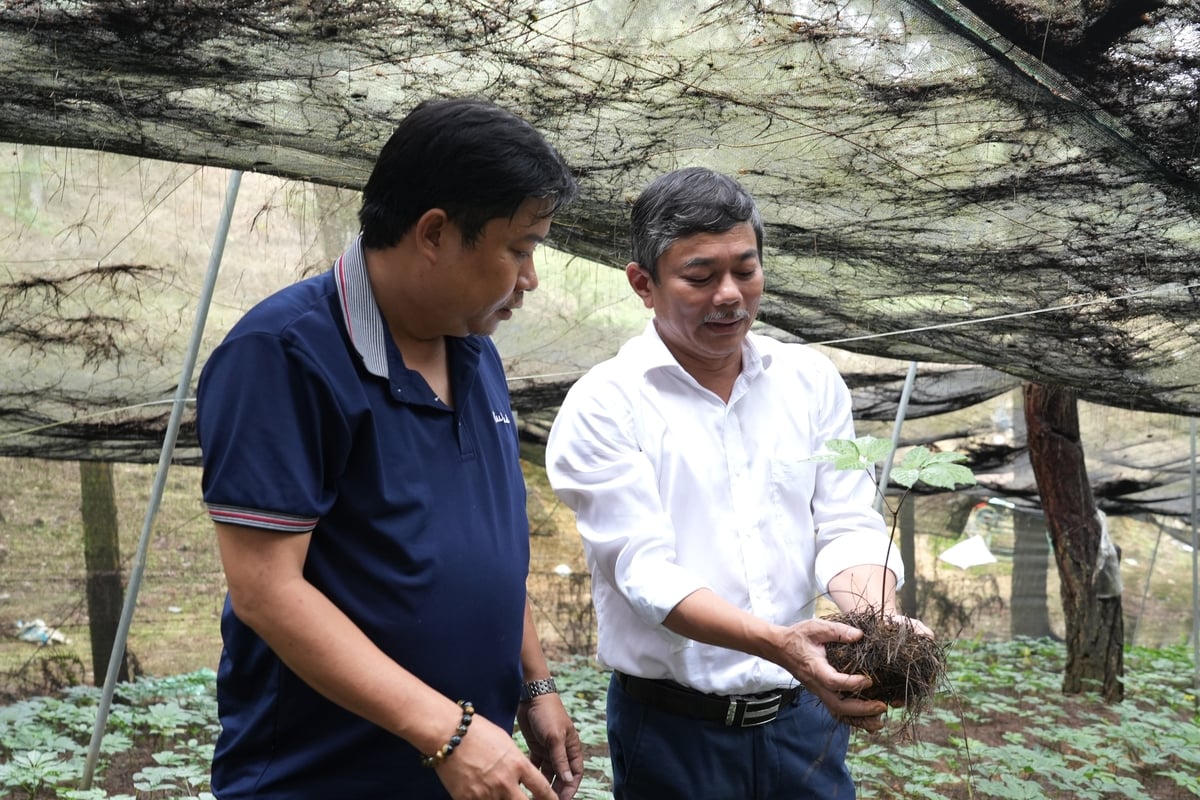
Each herbal product is a slice of time, a piece of the mountain’s lifeblood.
Here, people do not merely plant. They live alongside them. The cooperative hires no labor; each member is an integral link in a closed-loop value chain, spanning planting, preliminary processing, deep processing, and even tourism and culinary experiences. Every product comes with its own little story: who went harvesting that day, whether it rained, whether the leaves were touched by frost, how early a Dao elder began her trek uphill with a bamboo basket on her back…
Life here is healing. Journalist Tran Nhung, former Editor-in-Chief of the Veterans’ Newspaper, shared emotionally after her visit: “Never have I witnessed such a beautiful harmony between medicinal plants and daily life. Herbs here are precious not only for their healing properties but for their purity. The founders of this cooperative are truly dedicated.”
Mr. Vu Van Long, a tourist from Hanoi, also expressed his joy at seeing the well-ordered gardens of notoginseng (tam thất) and lush ginseng growing under the forest canopy: “I’m truly thrilled. The landscape is wild and unspoiled, the climate is cool and fresh, and the people are warm. Together, they create an ideal space for health and wellness tourism.”

People here poured heart and intellect into preserving valuable medicinal plants, safeguarding local culture, and building sustainable livelihoods for highland communities.
From a government perspective, Mr. Nguyen Quang Vinh, Deputy Director of the Department of Agriculture and Environment of Lao Cai province, remarked: “Cultivating medicinal plants under the forest canopy has been promoted and guided by the province for many years, particularly intensified since 2020. This multifunctional model helps protect water sources, enhance carbon absorption, and generate sustainable livelihoods for local communities.
Importantly, combining herbal cultivation with eco- and cultural tourism not only makes full use of forest potential but also revitalizes the identity of ethnic minority groups. This approach raises community awareness about forest protection and cultural preservation, while enabling them to earn additional income from the forest itself.
At present, ecotourism linked with under-canopy medicinal cultivation has become one of the province’s key development strategies.”
“Our goal,” Mr. Vinh added, “is to fully harness the multifunctional value of forests, while empowering ethnic communities to protect them and uphold their traditional cultural heritage.”
Translated by Kieu Chi
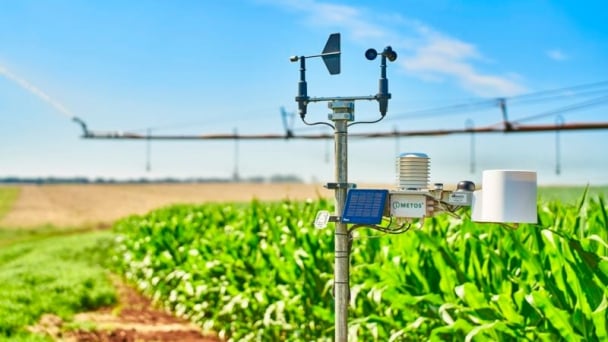
(VAN) Weather is no longer just a matter of fate. Forecasts have now become an essential companion for farmers in every crop season.
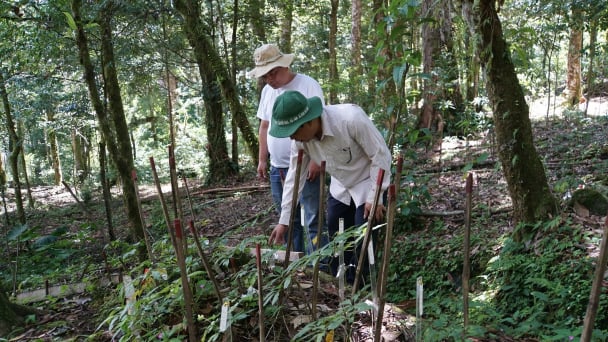
(VAN) The festival aims to promote Ngoc Linh ginseng and the herbal medicine sector as key economic drivers, closely linked with the conservation of natural resources and the cultural identity of the mountainous region.

(VAN) AVAC Vietnam shipped 120,000 doses of the African Swine Fever vaccine to Indonesia on June 9. The vaccine is anticipated to be delivered to importers and distributors after a four-hour flight.
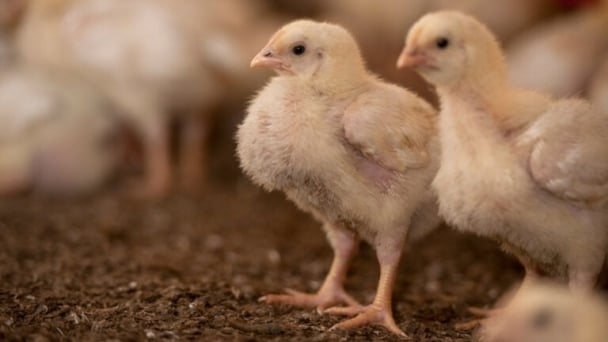
(VAN) A recent study by the Royal Veterinary College has highlighted key challenges preventing the UK poultry industry from adopting higher welfare standards outlined in the Better Chicken Commitment.

(VAN) Prime Minister Pham Minh Chinh affirmed that Vietnam has always been a reliable partner, ready to actively participate and take the lead in maritime cooperation mechanisms and ocean protection efforts.

(VAN) World Food Safety Day 2025 emphasizes the urgency of practical actions, science-based approaches, and strengthened coordination among stakeholders.